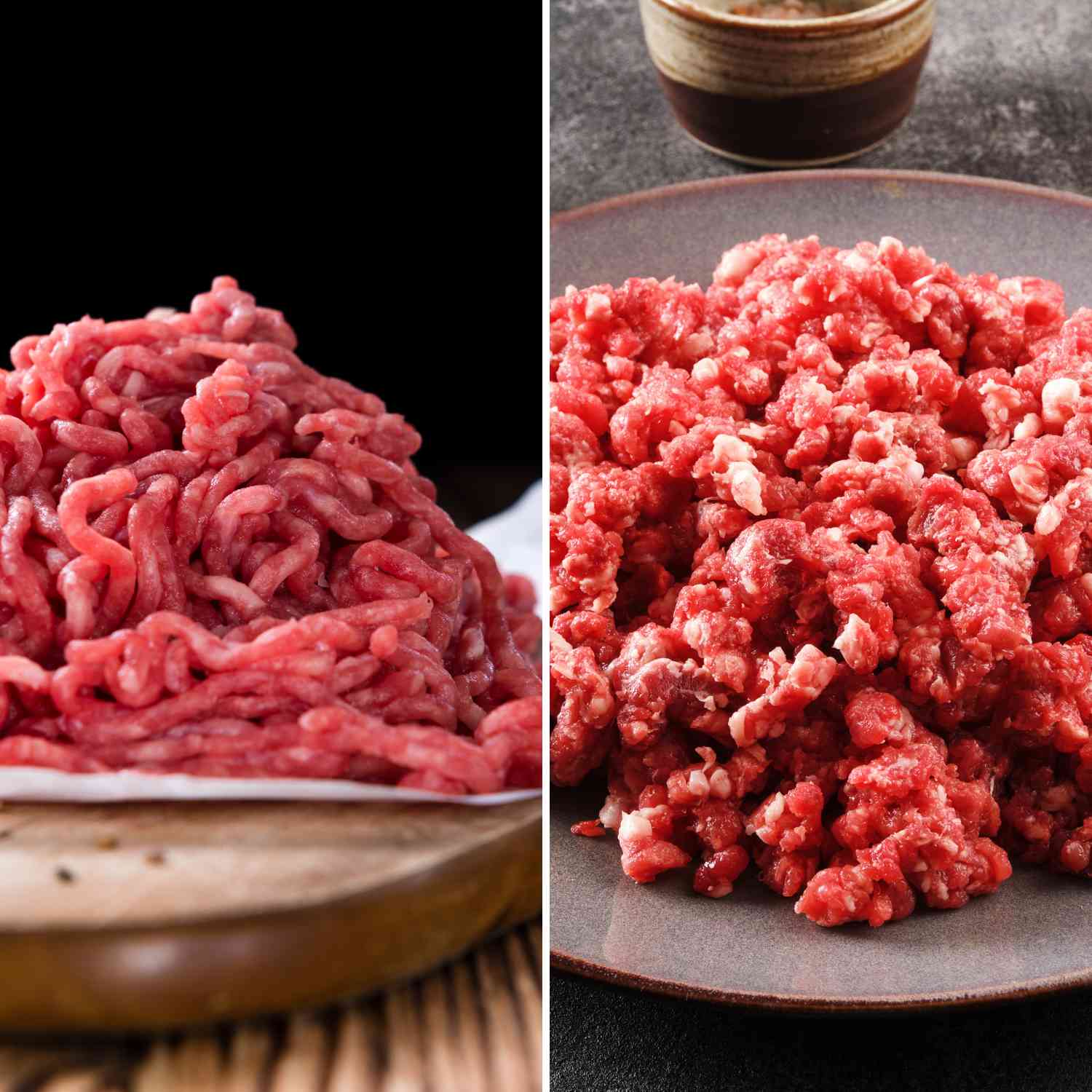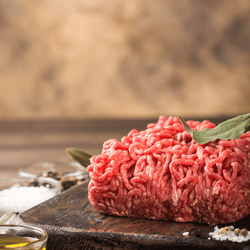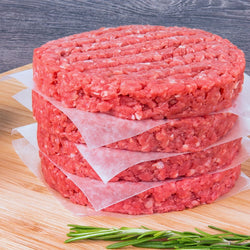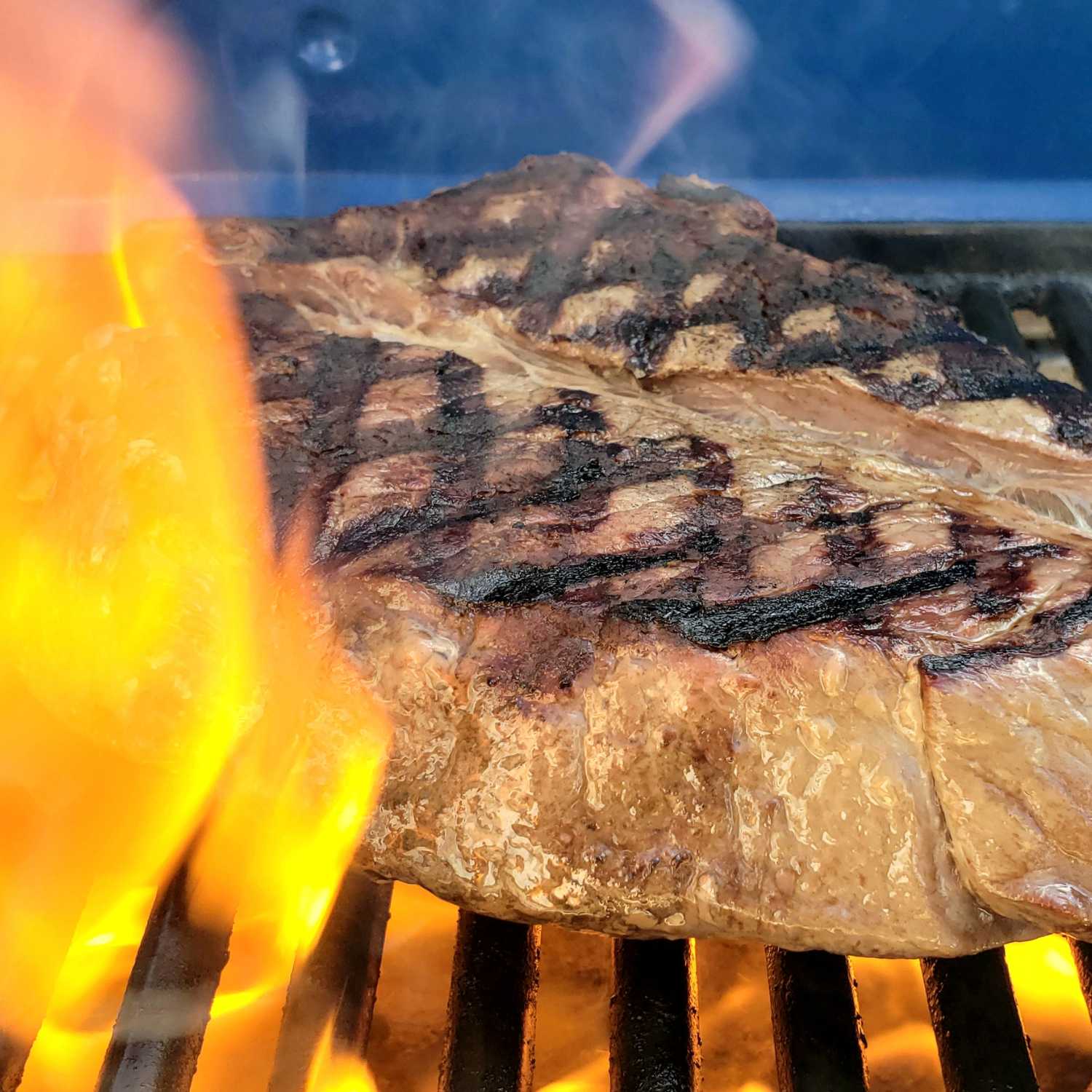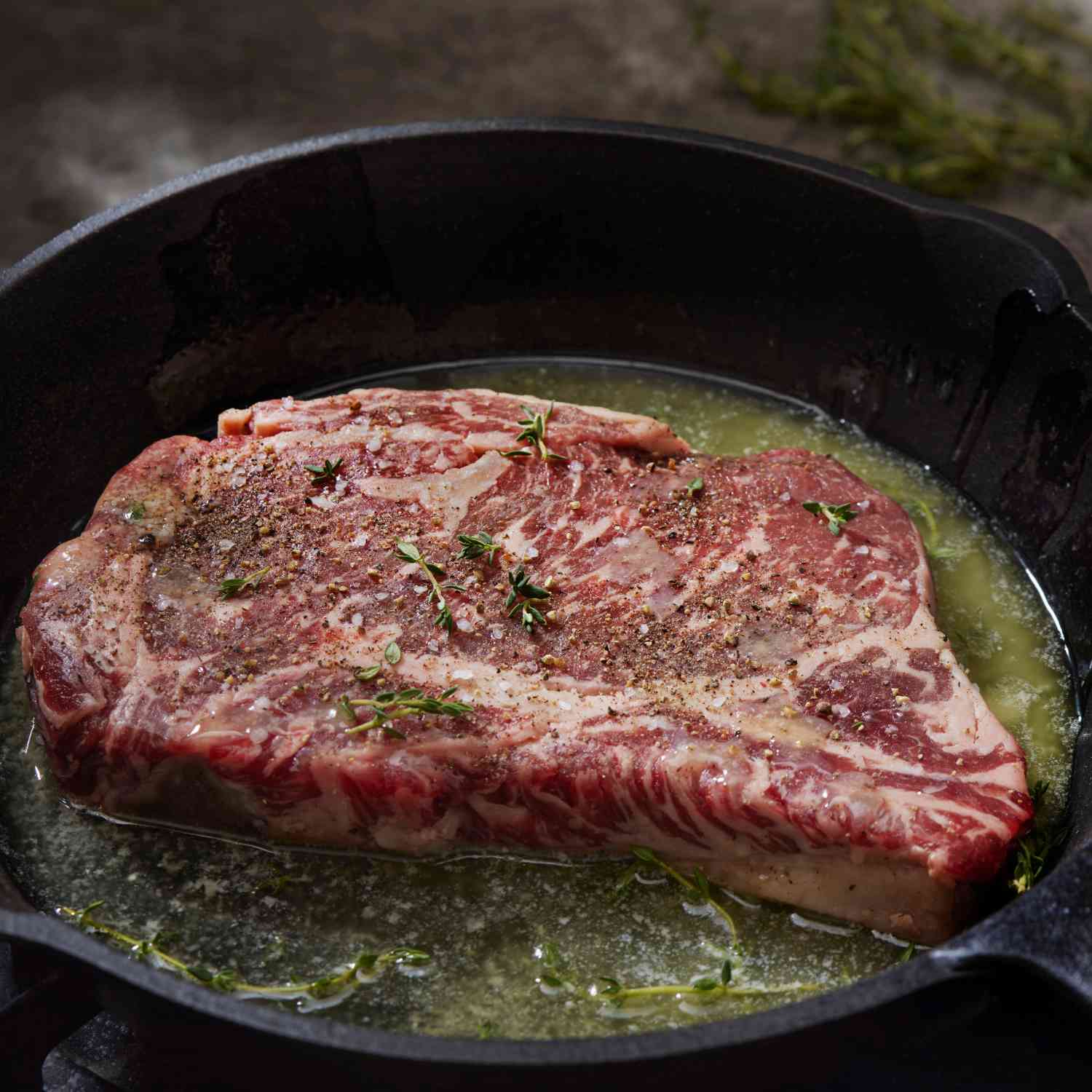The Ultimate Guide to Meat Cuts: Minced vs. Ground Meat
Introduction
In this comprehensive guide, we delve into the world of meat cuts, specifically focusing on minced and ground meat. Understanding the distinctions between these two popular options is crucial for both seasoned home cooks and professional chefs alike. By the end of this article, you'll have a clear grasp of the differences and the versatility each offers in the culinary realm.
When discussing meat preparation, it's common to hear the terms "ground meat" and "minced meat" used as if they mean the same thing. However, they actually refer to distinct processes.
Ground Meat vs. Minced Meat
- Ground Meat: This is created by finely grinding the meat, often mixing lean cuts with fat, resulting in a smooth, consistent texture. The process can introduce a mixture of different parts of the animal, making it an emulsion. It's the kind of meat you'll typically find in sausages or burger patties.
- Minced Meat: In contrast, minced meat involves finely chopping the skeletal muscle without necessarily adding fat. Each piece is identifiable, and the texture remains more intact than in ground meat. It's often preferred in dishes that require a coarser texture, like certain types of pies or traditional mince dishes.
Understanding these differences not only clarifies terminology but also helps you choose the right type of meat for your recipes.
Minced Meat: A Closer Look
What is Minced Meat?
Minced meat, also known as "chopped" meat, is created by finely cutting or grinding meat into small, uniform pieces. The process typically involves using a knife or specialized meat grinder. Minced meat retains more texture compared to ground meat, making it a popular choice for various dishes.
How is Minced Meat Typically Prepared?
Minced meat is a versatile ingredient that brings a unique texture to various dishes. The preparation process involves finely chopping meat, which can be done with a sharp knife or using a food processor for ease and efficiency.
- Selecting the Meat: Start by choosing your preferred type of meat—beef, pork, chicken, or turkey are popular options. For a richer flavor, opt for cuts with a bit of fat, like beef chuck or pork shoulder.
-
Chopping Methods:
- By Hand: Using a sharp knife, finely dice the meat into tiny pieces. This method gives you control over the chunkiness, allowing for a coarser or finer result based on culinary needs.
- Food Processor: If you prefer a quicker approach, a food processor can achieve a consistent mince. Pulse the meat in short bursts to avoid turning it into a paste.
- Texture and Consistency: The hand-chopped method often results in a chunkier and more textured finish. This gives the meat a satisfying chewiness that holds up well during cooking.
- Cooking Tips: Minced meat is ready to be seared, grilled, or stewed. Its ability to retain its shape makes it perfect for forming patties, meatballs, or fillings for savory pastries.
Remember, the choice of utensils and the type of meat are both crucial in determining the final texture of your minced meat, making it an adaptable base for countless recipes.
Benefits of Minced Meat
- Enhanced Texture:
Minced meat's coarse texture adds depth to recipes, providing a satisfying mouthfeel in dishes like meatloaf, meatballs, and savory pies.
- Better Flavor Retention:
The larger surface area in minced meat allows for better absorption of marinades and seasonings, resulting in a burst of flavors in every bite. - Versatility:
Minced meat is versatile and can be used in both fast-cooking dishes like stir-fries and slow-cooked recipes like chili or bolognese sauce.
Popular Cuts for Minced Meat
- Beef:
Chuck, sirloin, and brisket are popular choices for minced beef. - Pork:
Shoulder and belly cuts are commonly used for minced pork. - Chicken:
Chicken breasts and thighs are often minced for various poultry dishes.
Over the years, the role of minced meat in British Christmas mince pies has significantly transformed. Originally, these festive treats featured a filling that combined minced meat with dried fruits, spices, and spirits like brandy. This combination created a rich and hearty pie.
However, as time progressed, the recipe evolved. The savory element of minced meat was gradually phased out, leaving behind a sweet concoction of fruits, spices, and sugar. Although actual meat was no longer included in the filling, the traditional name "mince pie" persisted, reflecting its historical roots. This evolution mirrors broader shifts in culinary preferences, favoring sweet over savory for these seasonal favorites.
Ground Meat: A Detailed Examination
What is Ground Meat?
Ground meat is created by grinding meat into smaller particles using specialized equipment. This process results in a smoother, more uniform consistency compared to minced meat. It's important to note that, like sausage, ground meat often contains additional ingredients to enhance flavor and texture. These can include water, soy, or excessive fat from other animals, making it not 100% beef, lamb, pork, etc.
When cooked, ground meat and minced meat each exhibit distinct characteristics. Ground meat, typically finer in texture, tends to break down and blend smoothly into dishes such as chili, gravy, or stew. This allows it to thicken the sauce while imparting its rich flavor evenly throughout the dish.
In contrast, minced meat is known for its coarser texture. When cooked, it retains its shape and provides a satisfying chewiness, making it ideal for recipes where you want more texture, like hearty stews or robust casseroles.
Understanding these differences can help you choose the right type of meat for your culinary creations, whether you're aiming for a silky sauce or a textured bite.
How is Ground Meat Made?
To produce ground meat, cuts of meat are fed into a meat grinder. This equipment breaks down the meat into fine particles, ensuring an even texture throughout. The grinding process can incorporate other ingredients or additives, creating a versatile product suitable for various dishes.
Understanding the Contents: Ground Meat vs. Minced Meat
If you're wondering about the key difference in the contents of ground meat versus minced meat, here's a straightforward explanation:
-
Ground Meat:
Often includes extra ingredients such as fats, fillers, or seasonings. This mixture can enhance flavor and texture but means that the product isn't purely meat.
-
Minced Meat:
Purely made from meat, without any additions. This means you're getting a product that's 100% meat, with no extra components.
In essence, while ground meat provides a variety of flavors and textures due to additional components, minced meat offers the simplicity and purity of meat alone.
The Process of Grinding Meat
To achieve that perfect texture, start by selecting a suitable cut of meat. Beef chuck is an excellent choice due to its economical price and ideal marbling, which contributes both fat and flavor.
Before you begin grinding, ensure you have a meat grinder at hand. If you don't, it's worth investing in one for the best results at home. Using a meat cleaver, chop the meat into smaller chunks. The size of these pieces should align with the capacity of your grinder.
A crucial step in this process is to chill the meat in the refrigerator beforehand. Cold meat grinds more effectively, maintaining its structure and ensuring an even chop, rather than smearing.
Once prepared, feed the meat carefully into the grinder. The result should be smooth, uniform strands of ground meat, ready to be transformed into your favorite dishes.
Understanding the Differences: Ground Meat vs. Minced Meat
When deciding between ground meat and minced meat, it's crucial to recognize their differences in meat content and additional ingredients. The distinctions can significantly impact flavor, texture, and nutrition.
Ground Meat: A Mix of Ingredients
Ground meat often contains more than just the meat itself. Typically, it includes:
- Water: Used to enhance texture and juiciness.
- Soy or Fillers: Often added to extend the product and adjust flavor.
- Multiple Meat Sources: Can blend varieties such as beef and pork, offering a unique taste profile.
These elements together mean ground meat isn't purely meat, so checking the label is essential to understand what you're getting. It should detail not only the types of meat but also the ratio of meat to other ingredients like water or soy.
Minced Meat: Pure and Simple
In contrast, minced meat offers a more straightforward composition:
- 100% Single-Animal Source: Derived entirely from one type of animal.
- Only Meat: Consists solely of skeletal muscles and tendons without any fillers or additives.
Minced meat provides a pure, unaltered meat experience, ensuring a consistent texture and authentic taste that's as close to natural as possible.
Understanding these distinctions can help you make informed decisions based on your dietary needs and culinary preferences. Whether you opt for ground or minced meat, always consider the ingredient list to match your expectations.
Advantages of Ground Meat
1. Uniform Texture
Ground meat's consistent texture is ideal for recipes that require even distribution of meat, such as hamburgers and sausages.
2. Faster Cooking
Due to its finer texture, ground meat cooks more quickly than minced meat, making it perfect for time-sensitive recipes.
3. Binding Properties
Ground meat often serves as a binding agent in dishes like meatloaf or meat patties, holding ingredients together effectively.
Common Cuts for Ground Meat
- Beef: Lean cuts like sirloin and round are commonly ground for burgers, while fattier cuts like chuck offer a juicier option.
- Pork: Ground pork is widely used in sausages and meatballs.
- Turkey and Chicken: Ground poultry is an excellent alternative for those seeking a leaner meat option.
This comprehensive understanding of ground meat not only highlights its versatility and benefits but also ensures you know exactly what goes into this staple ingredient, helping you make informed choices in the kitchen.
Cooking Tips and Recipes
Minced Meat Recipes
Classic Spaghetti Bolognese

Ground Meat Recipes
Homemade Beef Burgers

Conclusion
In conclusion, both minced and ground meat offer unique characteristics that can elevate your culinary creations. The choice between the two ultimately depends on your specific recipe and desired outcome. Minced meat lends itself well to dishes requiring texture and flavor complexity, while ground meat provides uniformity and quick cooking times. Armed with this knowledge, you're now equipped to explore a world of delectable dishes, from savory meatloafs to juicy hamburgers.

